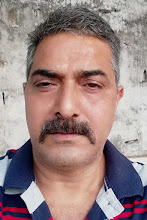 |
| The Lavi Fair |
The first European to
visit the town in 1815 was James B Frazer, who found the place in miserable
condition which bespoke of wretchedness and poverty caused by the Gurkhas.
However he found the Dewan- e- Khas or the Hall of private audience situated on
the highest terrace in good condition with its interior woodwork carves in
intricate designs and patterns.
He also praised the wood
carving in the royal palace. The windows and openings were covered with wooden
screens which had flowers and human figures carved in such a manner so as to
partially admit the light without exposing those inside.
The roof in particular attracted his attention
from the tasteful way in which it was done. The slates were placed with utmost
precision, each a perfect square with the joint covered with a long piece like
an isosceles triangle with its base upwards and the apex cut off below. The
pillars screen and cornice still have the quality to amaze the viewer.
Frazer nevertheless
regretted that the archives and the records of the state as well as of the
royal family were entirely destroyed by the Gurkhas. There was however no doubt
that the king descended from the ancient and the noble Rajput family. The
Bushahr ruling family claims its descent from Lord Krishna. It is said that
Praduman, the grandson of Lord Krishna had journeyed from Brindaban to Rampur
and married the daughter of the ruler Bavasadeo or Banasur, whom he he later
killed and usurped the kingdom for himself.
During the Mughal rule in
India, the Bushahr was ruled by Kehri Singh (1619-1696), the most powerful
among the hill chieftains. He was also
the contemporary of Dalai Lama Lobsang Gyatso (1617-1682), the spiritual and the political
head of Tibet. Kehri Singh has helped Dalai Lama in recovering the territory
from the Rajah, who had annexed it. The horses from Tibet and the swords from
Bushahr were exchanged as a token of their friendship.
It was mentioned in the
treaty that their friendly relations would continue till the times Satluj goes
dry, the crows become white, horses grow horns and the stones ( which are
stated to be at the borders of both the states and on which the treaty was
signed) produce hair or wool. Since then it is presumed that the trade
relations increased and eventually the Lavi fair was held.
There is another version
regarding the origin of the festival or Lavi fair according to which the word
Loi, which in the local dialect means shearing of sheep gradually changed to
Lavi.
Himachal Pradesh is a
veritable cornucopia of nature. It is also a land of colorful fairs and
festivals which are unique in style and attractive in display. The carnival
nature and social life of the people find manifestation in them. In the finest
of the natural settings of the region the people have developed a height of
artistic sense which expresses itself in the crafts of daily use.
The Lavi fair, as the past
accounts run, took place twice in the month of Jyestha or June and Kartika or
November, which are suited to the shearing of sheep. With the changing times
the Lavi fair has come to be celebrated only once a year, that is in the second
week of November.
In comparison to most of
the religious fairs in the hills, the Lavi fair is purely a trade fair, but
imbued with rich traditions and cultural heritage.
During the fair the entire
Rampur town gets turned into a mela or fair venue, where everyone participates
in merry making. The people at this time are finished with harvesting and the
Lavi fair gives them an opportunity to go for the things of their need and
choice. The traders from far and wide join the festivities and a big market is
held to sell the items like clothes and garments, wool and pashmina, leather
and furs, hides and skins, metal-ware and pottery, ornaments and jewelry,
fruits and vegetables and mant more.
The fair offers a
fascinating spectacle as the traders encamp on the either side of the river
Satluj. During the week long festivities, thousands of people dressed in their
traditional best can be seen making merry. Most of them sleep out in the open.
Some people stay awake while singing and dancing all through the night. As the
darkness falls, the lights and sounds of merry making create a mystic atmosphere.
The tourists after braving
the hazards of the long and tiring journey through the hills forget all their
fatigue as they watch the celebrations and what they carry back are not simple
souvenirs but the real trophies of the memories of the rich culture of Himachal
Pradesh.




